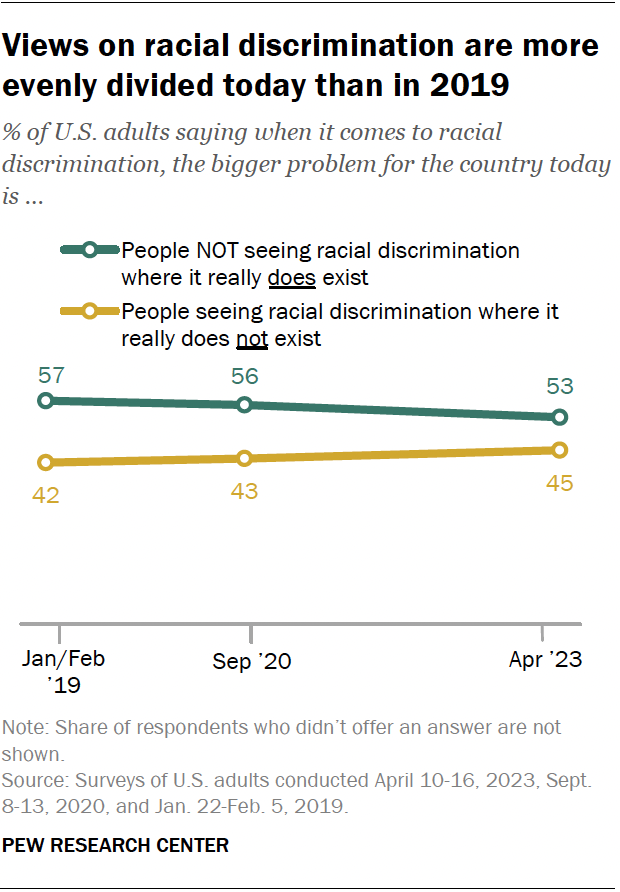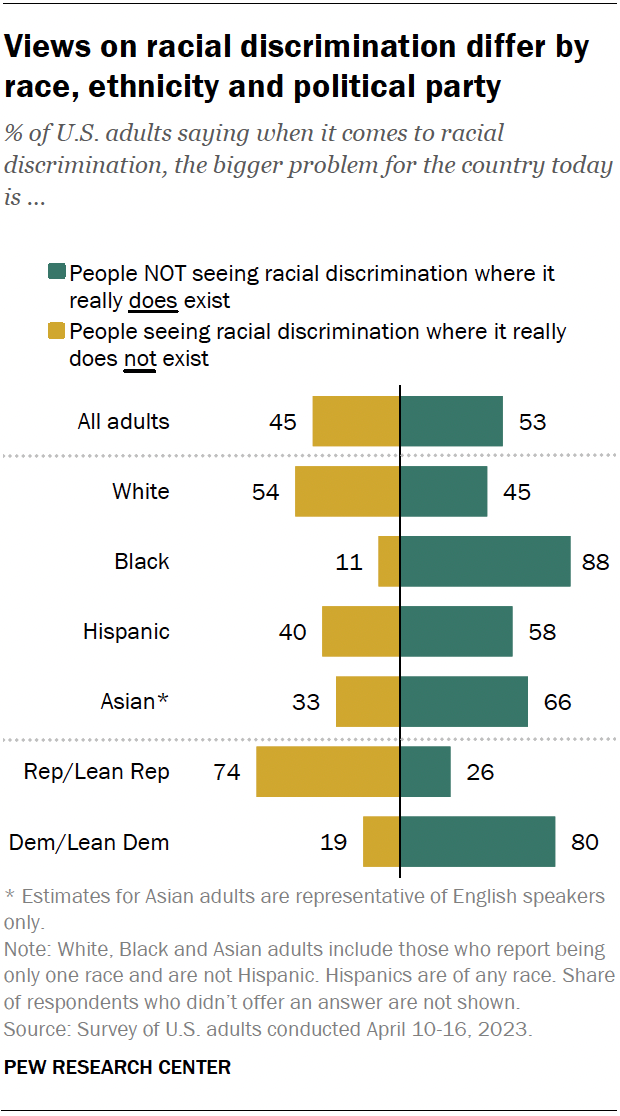Ahead of the 60th anniversary of the March on Washington for Black Americans’ civil rights, we asked U.S. adults what they think is the bigger problem when it comes to racial discrimination in the country today.
Pew Research Center conducted this analysis to explore how Americans view racial discrimination in the United States today compared with previous years. This question is a part of a broader study that asked Americans about their views on the Black Lives Matter movement and Martin Luther King Jr.’s legacy.
This analysis is based on a survey of 5,073 U.S. adults conducted April 10-16, 2023. Everyone who took part is a member of the Center’s American Trends Panel (ATP), an online survey panel that is recruited through national, random sampling of residential addresses. Address-based sampling ensures that nearly all U.S. adults have a chance of selection. The survey is weighted to be representative of the U.S. adult population by gender, race, ethnicity, partisan affiliation, education and other categories. Read more about the ATP’s methodology.
Here are the questions used for this analysis, along with responses, and the survey methodology.

- 53% say people not seeing racial discrimination where it really does exist is the bigger problem.
- 45% point to people seeing racial discrimination where it really doesn’t exist as the larger issue.
Views on this have changed in recent years, according to Pew Research Center surveys. In 2019, 57% said people overlooking racial discrimination was the bigger problem, while 42% pointed to people seeing it where it really didn’t exist. That gap has narrowed from 15 to 8 percentage points.
Americans’ current views on this question differ greatly by:
- Race and ethnicity: 88% of Black adults say people overlooking discrimination is the bigger problem. Smaller majorities of Asian (66%) and Hispanic (58%) adults say the same, as do 45% of White adults.

- Partisanship: 80% of Democrats and Democratic-leaning independents say people not seeing racial discrimination where it does exist is the larger issue. About three-quarters (74%) of Republicans and Republican leaners give the opposite answer.
How views on racial discrimination differ within political parties
Majorities of Republicans across age groups say people seeing racial discrimination where it doesn’t exist is the larger issue. But Republicans ages 50 and older are more likely than those under 50 to say this (78% vs. 68%).
Among Democrats, age differences aren’t as large, but there are differences by race and ethnicity. Hispanic Democrats are the most likely to say people seeing discrimination where it doesn’t exist is the bigger problem. Some 29% say this, compared with 20% of Asian Democrats, 19% of White Democrats and 8% of Black Democrats.
Note: Here are the questions used for this analysis, along with responses, and the survey methodology.
